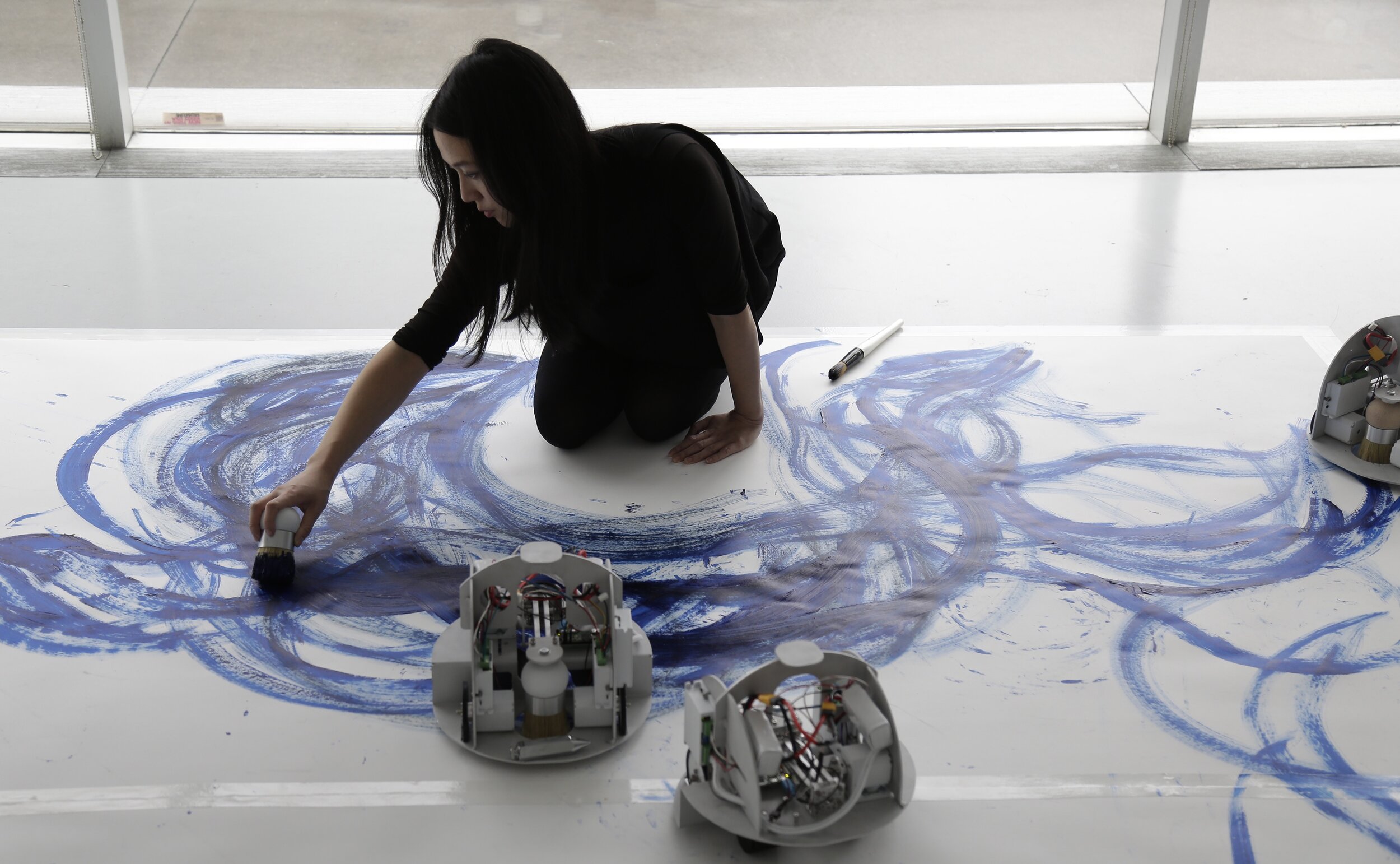Ten months into this pandemic, the catastrophic human and economic toll is clear. The coronavirus SARS-CoV-2 has caused nearly 18 million infections and more than 300,000 deaths in the United States alone. American job recovery has stalled; companies that were hiring during the summer are now hitting the pause button. Thousands of businesses have closed their doors for good.
The economic impact, however, is uneven. Technology, finance, e-commerce, shipping and logistics sectors are doing well. Travel, dining, service and hospitality are struggling. But the arts have been devastated. In the first months of the pandemic, unemployment among artists was greater than 60%, with 95% of creative workers reporting a significant loss of income. And largely reliant on indoor gatherings, the arts economy never saw a summer rebound.
Lauren Orr / Shutterstock
Pandemic related damage to the arts and culture industry goes beyond the arts
“Broadway shut down on March 12. We thought it was going to be for a month. We knew so little about the disease that it seemed reasonable at the time,” remembered Katie Kresek, a freelance violinist in New York City and concertmaster of Moulin Rouge on Broadway. “I was going to be singing and playing violin on a tour to Australia. That was canceled. I had orchestra gigs lined up, and those were canceled. Everything went away.”
Katie Kresek, violin, in the orchestra pit (pre-pandemic) of the Broadway show Moulin Rouge. (Photo: Avery Brunkus)
“Many performers and musicians live on the edge where they aren’t prepared for a catastrophic loss of income,” said Kresek. “I have colleagues who have taken temp jobs, given up their apartments, moved back in with their families.”
This doesn’t just hurt artists. According to the Bureau of Economic Analysis, the creative economy employs 5.1 million Americans and contributes $877 billion annually to GDP. With no relief in sight for the creative sector, communities across the country are experiencing drops in associated tax revenue and a diminished quality of life for all residents.
Americans for the Arts has a policy template for the Biden/Harris team
The new administration taking office on January 20 is poised to address this suffering. For the past few months, Americans for the Arts has been advising Joe Biden and Kamala Harris on the best way to forge a new partnership between the arts and government.
In early September of this year, Americans for the Arts released “Putting Creative Workers to Work,” a template for arts and government cooperation. Representatives from cultural nonprofits and government agencies, creative gig workers, independent artists and members of the BIPOC community all contributed to identifying specific goals that the Biden administration can put into effect, even if Republicans maintain control of the Senate.
Proposed actions include an expansion of existing workforce hiring programs to include artists and creative workers, launching a program of federal arts commissions, developing an ArtistCorps within AmeriCorps, continuing CARES Act policies that extended benefits to the self-employed, and the creation of a new leadership position to coordinate federal arts policy.
“What is the best way to get the arts into every aspect of the federal government and private sector life?” explained Nina Ozlu Tunceli, Executive Director of Americans for the Arts Action Fund. “Our recommendation is that, within the White House, there be a cultural advisor to the president, reporting directly to the president, who considers how the arts can fit into every new policy that’s developed.” Amy Webb, Director of Business Programs and Partnerships at Americans for the Arts, added, “That advisor should coordinate arts grantmaking programs and oversee agencies like the NEA and NEH. Right now, there isn’t one person or one voice in government who represents arts and culture. To thread all those pieces together within the executive office would be very exciting.”
Nina Ozlu Tunceli speaking at The National Arts Action Summit. (Photo: Jerry Frishman)
Many of the proposals in “Putting Creative Workers to Work” are reminiscent of programs from the depression-era Works Progress Administration (WPA) which employed artists across America. But Tunceli points out an important difference. “The WPA was about getting the creative workforce into governmental projects and infrastructure, but we also want to involve the private sector. This is the updated version—the new New Deal. We want the private sector to embrace the idea of infusing creative workers into their business model.”
Corporate America is discovering new value in the arts
One business that’s on the forefront of this kind of thinking is the communications giant Nokia, specifically its historic Bell Labs research division headquartered in Murray Hill, New Jersey.
Domhnaill Hernon is the head of E.A.T. (Experiments in Arts and Technology) at Nokia Bell Labs. Its mission is to create technology that augments human senses and enables new forms of empathic communication, interaction and sharing.
The best way to reach that goal, according to Hernon, is to infuse artistic practice into a research mindset and methodology.
“The organization that I lead today is 100% comprised of people with an arts background. I describe them as creative technologists,” said Hernon. “That’s someone who’s either done an undergraduate degree in a humanities or artistic discipline and then learned how to code and build things on the side. Or they’ve done an undergrad in a scientific discipline with a creative practice outside of that. This is a skillset with tremendous value.”
Artists learning from the engineers at Nokia is an equally important part of E.A.T. Recent artist-in-residence and renowned beatboxer Harry Yeff (aka Reeps One) collaborated with the team at Nokia Bell Labs to train machine learning algorithms as a new creative partner.
“Reeps One worked with this piece of technology until it reached a level of maturity that it gave him back something new,” said Hernon. “In the process, he changed his perspective on his voice. He’s creating new sounds and composing in new ways. He’s able to collaborate in real-time with his digital alter ego.”
For Nokia, how artists think about technology and its human interface has become a valuable source of insight, informing their work on new forms of communication.
“There are so many opportunities to do good work bringing the artistic perspective into business and technology,” said Hernon. “The future of innovation—and the future of humanity—lies at this intersection of arts and technology.”
Sougwen Chung, Nokia Bell Labs Artist in Residence project "Omnia per Omnia" 2018 (Photo: Nokia Bell Labs)
With a vaccine now being delivered and an end to the pandemic in sight, the U.S. is at a critical moment for recovery and growth in the arts. The challenge for the incoming administration is to get all the players—government, private industry, and the creative community—working together to advance their mutual interests.
It is a huge job. The question is, do the people at the top understand the arts, and artists, intimately enough to make this happen?
Do you have to love the arts to be a friend of the arts?
It is almost impossible to know if presidents and vice-presidents support cultural programs out of a genuine love of the arts—or if it’s just calculated political expediency. Does music move them? Are they inspired by theater? Do they thrill at a dance performance? We can’t see into their hearts. What matters are the policies they champion and the actions they take.
But there are clues if we care to look.
In contrast to politicians who downplay their formative artistic experiences, Kamala Harris has spoken enthusiastically about being a member of her high school dance troupe and playing the violin and french horn as a young woman. As district attorney, Harris was a supporter of cultural organizations in her home state of California. She served on the board of the San Francisco Museum of Modern Art, was a member of the San Francisco Jazz Center, and was active in educational and diversity programming at the Yerba Buena Center for the Arts.
Joe Biden’s cultural sympathies are with the written and spoken word. Biden has, for many years, shared the story of how reciting poetry in front of a mirror helped reduce his stutter and, in the process, how he fell in love with the art form. His passion for Irish poets, in particular, has accompanied him his entire political life. He has quoted Heaney and Yeats as senator, vice-president, candidate, and now president-elect. Lines from Heaney’s “The Cure at Troy” came to define Biden’s campaign message so strongly that, on election night, the Irish television network RTÉ closed its broadcast with a montage of photos and videos from Biden’s career. The soundtrack was Biden himself, reading this poem so close to his heart.
It may be comforting—even thrilling—for the arts community that the incoming administration has a renewal of culture as one of its priorities. But respecting artists as valuable and contributing members of society is what matters most.
“I met Joe Biden once at a concert,” said Kresek. “It was at a quartet gig that I played with a band called A Great Big World on Late Night with Seth Meyers. And Biden was the first guest. He came to the backstage area, commented on how beautiful the music was, and took the time to shake everybody’s hand and look them in the eye. For me, it was a moment of realization that someone who’s coming into a position of leadership in the world is going to bring with them a deep love of creativity and humanity. The contrast could not be starker.”
—
Published here on Forbes.com
December 23, 2020





